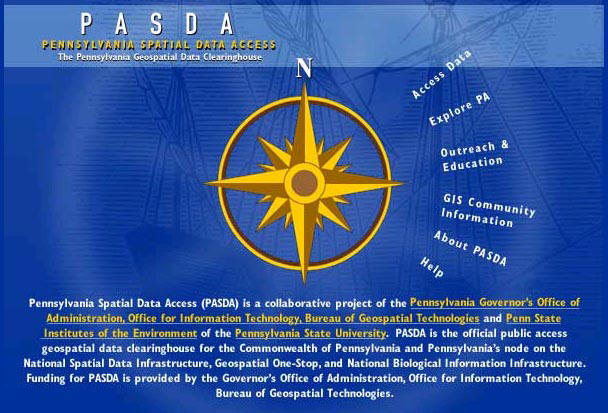A Regional GIS Data Center is an organized repository of Geographic Information System (GIS) data that offers mapping tools to local governments, planning partners, private organizations and the general public, to view, query, analyze and visualize geospatial data.
Why is this important to your community?
Geospatial data allows local governments, public and non-profit agencies and private organizations to visualize, analyze, and interpret information to better understand complex relationships, spatial patterns, and emerging trends. With 14 counties and 120 local communities spanning two states, the CONNECT Our Future effort has gained access to, and collected, substantial quantities of geospatial data organized in countless databases. Both CCOG and CRCOG have regional datasets that are shared with local governments and select datasets are maintained as funding allows. Establishing a formal Regional GIS Data Center would serve to retain the CONNECT regional partnership’s current level of data organization and provide a formal mechanism for maintaining, updating, and distributing geospatial data as it continues to evolve. In addition to maintaining accuracy, improving information access, and minimizing the duplication of efforts associated with multiple regional agencies managing multiple geospatial datasets, a single regional GIS data repository can also serve as a primary resource to track progress and identify gaps through future indicator reports and data-driven analyses.
According to the Urban and Regional Information Systems Association (URISA), the social, economic, environmental, and cultural aspects of well-being for every community are inextricably linked to each other by place. Geospatial technology, organized at the regional level, can be used to make those connections explicit in order to help each community manage its resources in the context of what neighboring communities are doing. In regions where the geographic or locational context of community activities and resources is used to visualize and then manage the connections, trends, and patterns, emergency response happens more quickly, social services are less costly, natural resources are better conserved, and economic development is enhanced. Recently the Atlanta Regional Council conducted an assessment of Freight Mobility in the 10-county region using its regional GIS data to assess the conflicts and opportunities of the freight industry in the region. The recommendations of the plan helped to reveal the necessary infrastructure upgrades and coordinated land use planning would ensure safe and functional freight networks, thus benefiting the economy and minimizing impacts with communities. Such a study illustrates the need for regional planning that relies on consistent and well-organized data.
Where is it appropriate to use?
What priorities does it address?
- Support Our Communities
- Support Local Farms
- Reduce Commuting Costs
- Increase Transportation Choices
What other tools are related?
How does it work?
Serving as a comprehensive geospatial data library, Regional GIS Data Centers provide universal access to geospatial data and information by, for, and about their respective regions. This information is usually stored and shared online through a web-based interface that allows technical experts to access raw GIS data, as well as providing an opportunity for the public to explore the data through live interactive mapping. A Regional GIS Data Center functions similarly to any data repository, with the key elements of:
- Data providers: Local governments, institutions, private companies,
- Data consumers: Geospatial professionals, decision-makers, non-profit organizations, businesses, the general public, and
- Data administrators: Data center staff, institution/government organization.
Regional GIS Data Centers rely on partnerships among data creators and developers to effectively manage and maintain accurate information, provide hardware and software services, and ensure the functionality of the user interface. Various partnership models exist ranging from informal relationships to executed agreements, and open source environments to data cooperatives that require paid memberships. Regardless of the nature of the partnerships, a functional regional GIS data center requires collaboration because of the diverse nature of geospatial data that will inevitably come from a wide variety of sources.
With spatial data ranging from the universal scale all the way down to site and property-specific geographic information, managing its collection, organization, and distribution is an important process that will ultimately impact public access and data utilization. National and state GIS data clearinghouses exist with their respective standards, and most regional land and transportation planning agencies maintain their own geographic information databases. Within the context of the CONNECT Region, both North Carolina and South Carolina have statewide GIS Coordinating Councils, as well as online geospatial data centers that function as a clearinghouse for their respective state GIS information sets and provide necessary related data management services. As part of the CONNECT regional partnership, additional local and regional datasets have been collected and new GIS data has been produced. If a Regional GIS Data Center is established within the CONNECT Region, these existing consortia can serve as an important foundation for data management and sharing.
Resources
- North Carolina One Map
- One Map Implementation Plan
- North Carolina Geographic Information Coordinating Council
- South Carolina Geographic Information Systems
- Federal Geographic Data Committee
- GeoMAPP Geospatial Multistate Archive and Preservation Partnership
- ESRI
- Urban and Regional Information Systems Association (URISA)
Ready to get started?
Using the Tool
Establishing a formal Regional GIS Data Center involves coordination with both smaller-scale and larger-scale levels of government and organizations to ensure platform consistency and metadata accuracy standards are met. The CONNECT Region already benefits from a GIS data center, providing many data layers and information. This system can be formalized to include direct collaboration with local governments, regional planning organizations, and statewide data coordinating councils as well as regular updates and protocols for standardization of data. This would establish a state-of-the-art Regional GIS Data Center that provides the opportunity for the region to function seamlessly and at the highest level of efficiency. Working toward the goal of formalizing the very robust local and regional CONNECT data into an expanded Regional GIS Data Center below are the potential steps to do so:- Establish a stakeholder group to help with the assessment of data needs, data presentation concerns, and partnership and funding considerations. Be sure that the stakeholder group includes all potential data-providing partners and representatives of data users at various levels. The stakeholder group should be a touch-point and advisor on each of the following steps.
- Meet with local government officials and data providers to discuss economic and efficiency benefits to involvement in the regional system.
- Establish initial data categories. This includes a review and cataloguing of existing GIS Data available in the Region to develop a full inventory of the information that will comprise the Regional GIS Data Center.
- Identify data necessary to produce a complete base map of the regional scale being considered. Data should be consistent within the context of the smaller (local government standards) and larger scale (statewide and national standards) and locally-sourced or capable of being locally-sourced. .Identify a staff member(s) to coordinate data to ensure alignment, including additional funding to support level of work, if required.
- Evaluate policy issues related to data sharing. Reference state and national standards for data sharing, and adopt the necessary protocol.
- Develop standards for content and data for each category. Categories should align with state and national standards. Coordinate with data providers of local governments to discuss metadata standards and how to update them to work seamlessly with system.
- Develop the formal “partnership format” with identified data-providers, develop supporting agreements, and execute agreements. Data partners will become directly involved in remaining technical issues, but the stakeholder group should continue as advisors on users and packaging of data for general public access.
- Identify primary and secondary users. Prioritize data center for technician use or general web-based information exploration.
- Develop database architecture for GIS data.
- Design and develop a web-based mapping interface. Review with stakeholders and local government officials and data providrs to collect feedback on the initial beta site.
- Consider creating “quick access” reports and maps of general public interest, based on stakeholder input, for use by students, non-profits, and others needing ready access to demographic and geographic data.
Partners
- Colleges and Universities
- Departments of Education / School Districts
- Landscape Architects, Planners, and Urban Designers
- MPOs, RPOs, and COGs
Where has it worked?
Pennsylvania Spatial Data Access (PASDA) - PA
 Image Source: Directions Magazine.
Image Source: Directions Magazine.
Contact
Maurie Caitlin Kelly, PASDA Director
Penn State University
814-863-0104
pasda@psu.eduAbout the Program
The Pennsylvania Spatial Data Access Center was initially developed in 1996 as a research and outreach program by the Pennsylvania State University as a service to local governments, businesses, and residents in the Commonwealth of Pennsylvania. Since then, PASDA has grown into a cooperative project of the Governor’s Office of Administration, Office for Information Technology, Geospatial Technologies Office and Penn State Institutes of Energy and the Environment of the Pennsylvania State University. Funding and support for the GIS Center is provided by the Pennsylvania Office for Information Technology, Geospatial Technologies Office in addition to the University’s contributions such as system administration, database support, and infrastructure. PASDA partners also include the Institutes of Energy and the Environment, the Center for Environmental Informatics, and the College of Earth and Mineral Sciences at the University of Pennsylvania.
Although the spatial data access center started as a traditional FTP site with geographic data available for download, it quickly evolved into a fully functional data interface with dynamic web-mapping capabilities. According to a 2005 article, the growth of PASDA, both data and services – has been exponential; from an original 35 data sets and metadata records, to an expanded data center that includes thousands of data sets available through a User Centered Interface (UCI). The UCI allows users of all capabilities to access data via database queries and state-of-the-art map and Web services. This process of growth was managed through a program of scheduled strategic planning sessions—including input from users and data partners throughout the state—which initiated in 2000 and recurred bi-annually since.
Why it works
According to PASDA’s director, the keystones of the data center’s success are attributed to:
- Collaboration: PASDA understands that collaboration among the geospatial community benefits everyone in the Commonwealth. Collaboration saves money, time, and makes the most of the limited resources of data providers.
- Cooperation: PASDA cooperates with all levels of government, non-profits, academia, business, and citizens to support the geospatial data infrastructure and access to data.
- Continuity: PASDA works with data providers to ensure continuity of data access and storage.
- Active engagement: PASDA engages the geospatial community to foster understanding and data sharing.
- Efficiency: PASDA’s streamlined processes make data sharing fast and easy for our partners.
- Free Access: PASDA provides data storage, data access and retrieval, and metadata services free of charge.
- Departments of Education / School Districts
- Support Local Farms


